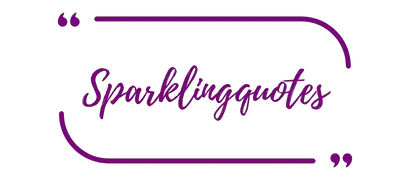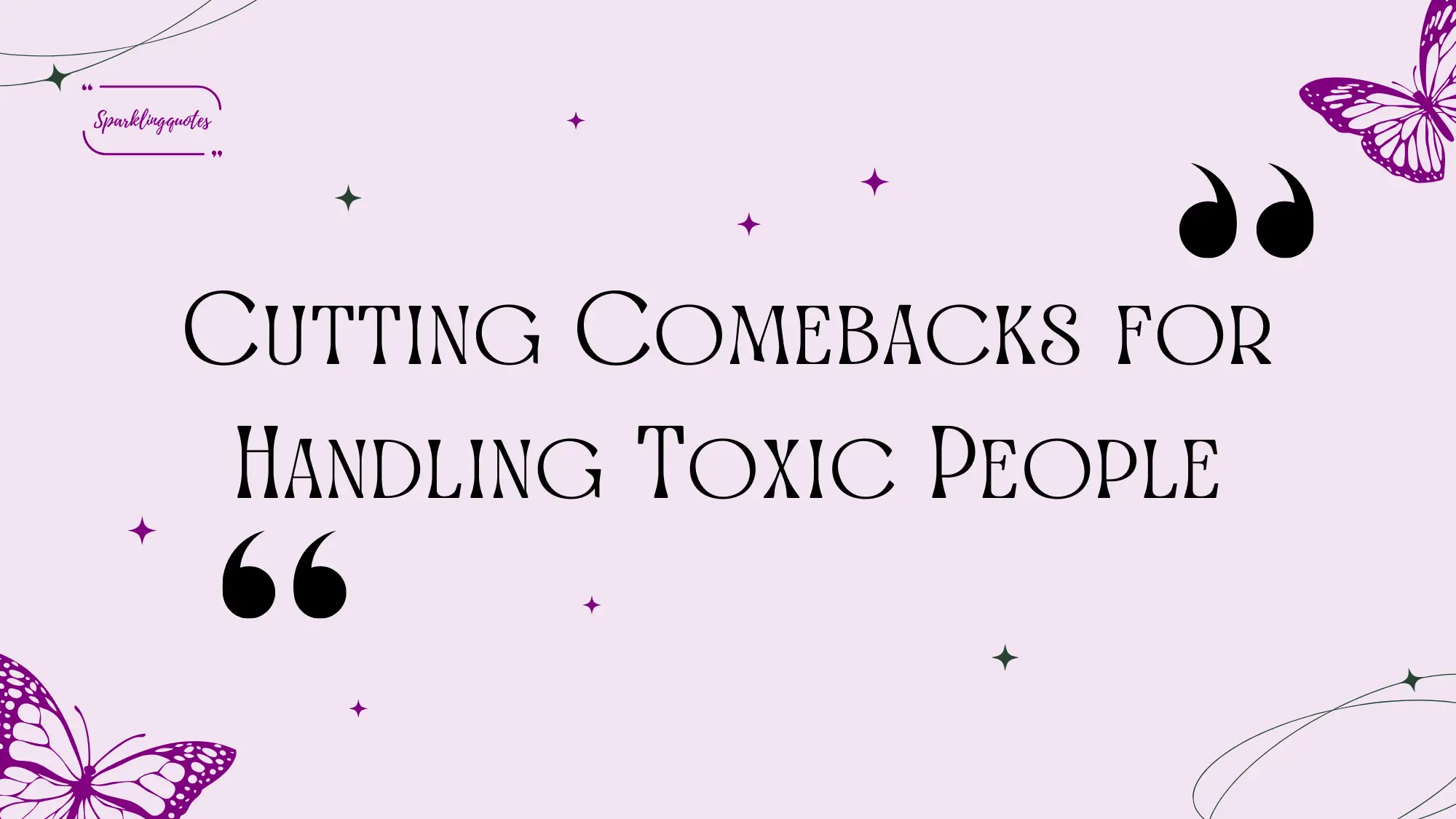Are you tired of feeling powerless in the face of toxic behavior? In this guide, we will explore 40+ powerful cutting comebacks for handling toxic people that will help you stand your ground. It’s time to take control and silence the negativity.
Table of Contents
Whether you are facing toxic encounters online or in person, this ultimate guide will equip you with the tools to respond effectively. Get ready to transform your interactions and reclaim your peace of mind. Let’s dive in and master the art of powerful comebacks!
Your Ultimate Guide to Cutting Comebacks for Handling Toxic People

Are you tired of dealing with toxic people who constantly drain your energy?
Do you find yourself at a loss for words when faced with negativity and manipulation?
You are not alone. Many of us struggle to handle difficult individuals in our lives.
But what if you had a secret weapon? A arsenal of powerful comebacks to shut down toxic behavior and regain control of your interactions?
That’s exactly what you will find in this ultimate guide. We have compiled over 40+ clever, assertive, and sometimes humorous cutting comebacks for handling toxic people to help you navigate challenging social situations.
Whether you are dealing with a passive-aggressive coworker, a manipulative family member, or an online troll, you will find the perfect comeback to silence them and protect your well-being.
Ready to become the ultimate comeback king (or queen)? Let’s dive in and explore the art of the toxic comeback.
💡 Key Takeaways: This guide equips you with 40+ powerful cutting comebacks for handling toxic people and regain control in challenging social situations.
What is a Toxic Behavior?
Toxic behavior is like a poison that seeps into our relationships and well-being. But what exactly makes a person toxic?
Toxic individuals often display patterns of negativity, manipulation, and disregard for others’ feelings. They might constantly criticize, play the victim, or drain your emotional energy. It’s important to say funny things to a Karen while they are trying to demean you.
Understanding these behaviors is the first step in learning how to respond effectively. It’s like recognizing the symptoms of a disease before finding the cure.
💡 Key Takeaways: Recognizing toxic behavior patterns is crucial for developing effective strategies to deal with difficult individuals.
Common Characteristics of Toxic People
Toxic people often share certain traits that make them challenging to interact with. Let’s explore some of these common characteristics:
1. Constant Negativity
Ever met someone who always sees the glass as half empty? Toxic individuals tend to focus on the negative aspects of every situation.
2. Manipulation
They are masters at twisting situations to their advantage, often using guilt or emotional blackmail as tools.
3. Lack of Empathy
Toxic people struggle to understand or care about others’ feelings. It’s all about their needs and wants.
4. Chronic Criticism
Nothing is ever good enough for them. They will find fault in everything and everyone.
5. Drama Creation
They thrive on conflict and often stir up trouble where there is none.
Understanding these traits can help you identify toxic behavior early on. It’s like having a radar for negativity!
💡 Key Takeaways: Recognizing common characteristics of toxic people, such as negativity, manipulation, and lack of empathy, helps in identifying and dealing with unhealthy relationships.
The Importance of Setting Boundaries
Setting boundaries is like building a fortress around your well-being. It’s a crucial step in dealing with toxic people and finding freedom from their negative influence.
Boundaries help you define what’s acceptable and what’s not in your relationships. They are not about controlling others, but about taking control of your own life.
By setting clear limits, you become the best person you can be, free from unnecessary stress and drama.
Remember, you have the right to protect your mental and emotional health!
💡 Key Takeaways: Setting clear boundaries is essential for protecting your well-being and finding freedom from toxic influences.
How To Build Self-Confidence and Self-Worth?
You are a superhero, armed with unshakeable self-confidence. That’s the power you need to become the ultimate comeback king or queen!
Building self-confidence starts with recognizing your worth. You are valuable, regardless of what toxic people might say or do.
Practice positive self-talk. Celebrate your achievements, no matter how small. Surround yourself with supportive people who uplift you.
The cutting comebacks for handling toxic people comes from a place of inner strength and self-assurance. You have got this!
💡 Key Takeaways: Cultivating self-confidence and recognizing your self-worth are crucial for delivering powerful cutting comebacks for handling toxic people effectively.
40+ Cutting Comebacks for Handling Toxic People for Different Scenarios
Ready to arm yourself with an arsenal of clever comebacks? Let’s dive into various scenarios and explore how to respond effectively to toxic behavior.
The key is to choose a response that fits the situation and your personality. It’s not about being mean, but about standing up for yourself with confidence.
Here’s your ultimate guide to cutting comebacks for handling toxic people!
1. Comebacks for Insults and Put-Downs
When faced with insults, a good comeback can stop a toxic person in their tracks. Here are some clever cutting comebacks for handling toxic people:
1. “I have been called worse things by better people.”
2. “I’m sorry you feel that way about me. I think you are pretty great!”
3. “Thanks for the feedback. I will file that under ‘Things I Don’t Care About’.”
4. “I’m not sure if that was supposed to be an insult, but you might want to try harder next time.”
5. “Wow, you have put a lot of thought into my life. Maybe it’s time to focus on your own?”
The best cutting comebacks for handling toxic people often combine wit with a touch of kindness. Kill them with kindness, as they say!
2. Responses to Passive-Aggressive Behavior
Passive-aggressive behavior can be frustrating. Here are some sarcastic comebacks to address it:
1. “I’m sensing some tension. Want to talk about it directly?”
2. “That’s an interesting way to express your feelings. Care to be more straightforward?”
3. “I’m not great at reading between the lines. Could you please be more clear?”
4. “I appreciate your subtle approach, but let’s discuss this openly.”
5. “Wow, that’s quite a toxic remark disguised as a compliment!”
These cutting comebacks for handling toxic people encourage open communication while calling out the passive-aggressive behavior.
3. Dealing with Gaslighting
Gaslighting is a manipulative tactic that can make you doubt your own reality. Here’s how to reply:
1. “I trust my perception of events. Let’s stick to the facts.”
2. “That’s not how I remember it. Can we discuss this without dismissing my experience?”
3. “I’m confident in my memory and feelings about this situation.”
4. “Trying to make me doubt myself won’t change what happened.”
5. “I know what I experienced. Let’s focus on finding a solution instead of denying the problem.”
Stand firm in your truth when faced with gaslighting attempts.
4. Handling Unsolicited Advice
Sometimes, the best way to handle unwanted advice is to shut it down politely. Try these:
1. “Thanks for your input. I will consider it if I need advice in the future.”
2. “I appreciate your concern, but I have got this under control.”
3. “That’s an interesting perspective. I will stick with my current approach for now.”
4. “I didn’t ask for advice, but thanks for sharing your thoughts.”
5. “I know you mean well, but I’m comfortable with my decisions.”
These cutting comebacks for handling toxic people assert your independence without being overly confrontational.
5. Responding to Gossip and Rumors
When faced with toxic messages or rumors, here’s how to respond:
1. “I’m not interested in discussing other people’s private lives.”
2. “Let’s talk about something more positive and productive.”
3. “I don’t participate in spreading rumors. It only leads to further negativity.”
4. “If you have concerns about someone, it’s best to talk to them directly.”
5. “Gossip says more about the gossiper than the person being talked about.”
These cutting comebacks for handling toxic people discourage gossip and promote more positive interactions.
6. Comebacks for Guilt-Tripping
Guilt-tripping is a common tactic used by toxic people. Here’s how to respond:
1. “I’m responsible for my choices, not for your feelings about them.”
2. “I understand you are disappointed, but that doesn’t change my decision.”
3. “Guilt isn’t a great motivator for me. Can we discuss this without emotional manipulation?”
4. “I’m sorry you feel that way, but I need to do what’s best for me.”
5. “Your happiness isn’t my responsibility. Let’s find a solution that works for both of us.”
These powerful cutting comebacks for handling toxic people assert your boundaries and discourage emotional manipulation.
7. Online vs. In-Person Comebacks
Navigating the digital world requires a different set of skills than face-to-face interactions. It’s like the difference between playing a Minecraft adventure map and exploring in real life.
Here’s how to adjust your comebacks for online interactions:
1. Online Comebacks
1. Use emojis or GIFs to convey tone (but don’t overdo it)
2. Take time to craft your response – you don’t need to reply instantly
3. Be aware that your words can be screenshotted and shared
4. Use humor carefully – sarcasm doesn’t always translate well in text
5. Consider the platform (a YouTube channel comment section is different from a professional email)
2. In-Person Comebacks
1. Use body language and tone of voice to reinforce your message
2. React in real-time, but take a breath before responding if needed
3. Be prepared for immediate follow-up reactions
4. Use facial expressions to convey emotions
5. Adjust your approach based on the person’s non-verbal cues
Whether online or in-person, the goal is to communicate effectively and assertively.
💡 Key Takeaways: Having a diverse range of cutting comebacks for handling toxic people for different scenarios equips you to handle various forms of toxic behavior effectively and assertively.
How To Use Humor as a Defense Mechanism?

Humor can be a powerful tool in defusing tense situations. A good savage cutting comebacks for handling toxic people with a touch of wit can often turn the tables on a toxic person.
For example, if someone makes a rude comment about your appearance, you could respond with: “Wow, I didn’t realize I woke up this morning to audition for your approval!”
Or if someone tries to put you down, you might say: “I’m sorry, I couldn’t hear you over the sound of how awesome I am.”
The goal is to create a sizzling hot conversation that leaves the toxic person speechless, not to escalate the conflict.
💡 Key Takeaways: Humor can be an effective defense mechanism, diffusing tension and disarming toxic individuals with wit and charm.
The Power of Assertive Communication
Assertive communication is the core functionality of dealing with toxic people. It’s about expressing your thoughts and feelings clearly and respectfully, without aggression or passivity.
Think of it as the power functionality in your communication toolkit. When you are assertive, you:
1. Use “I” statements to express your feelings
2. Maintain eye contact
3. Speak in a calm, clear voice
4. Respect others’ opinions while standing firm in your own
For example, instead of saying “You are always late!”, try “I feel frustrated when you are late because it affects our plans.”
Practice makes perfect. The more you use assertive communication, the more natural it becomes.
💡 Key Takeaways: Assertive communication is a powerful tool for effectively expressing your thoughts and feelings while maintaining respect for others.
How To Recognize and Responding to Different Types of Toxic Behavior?
Toxic behavior comes in many forms, much like the diverse characters you might encounter in a general discussion on an Overwatch forum. Let’s explore some common types:
1. The Constant Critic
This toxic player always finds fault in others.
Response: “I appreciate feedback when it’s constructive. Is there something specific you’d like me to improve?”
2. The Manipulator
They twist situations to their advantage.
Response: “I see what you are trying to do. Let’s discuss this openly and honestly instead.”
3. The Drama Queen/King
They thrive on conflict and attention.
Response: “I prefer to keep things drama-free. Can we focus on solutions instead of problems?”
4. The Victim
They always play the “woe is me” card.
Response: “That sounds challenging. What steps are you taking to improve the situation?”
5. The Narcissist
Everything revolves around them.
Response: “I understand this is important to you, but let’s consider other perspectives too.”
Recognizing these patterns helps you choose the most effective response. It’s like having a strategy guide for a complex game!
💡 Key Takeaways: Understanding different types of toxic behavior allows for more targeted and effective responses, improving your ability to handle difficult interactions.
When and How to Disengage from Toxic Situations?
Sometimes, the best thing you can do is walk away from a toxic situation. It’s not about running away; it’s about preserving your peace of mind.
Here are some signs it’s time to disengage:
1. The conversation is going in circles
2. You are feeling emotionally drained
3. The person refuses to listen or compromise
4. The interaction is affecting your mental health
When you decide to disengage, be firm but polite. You could say:
“I don’t think this conversation is productive. Let’s take a break and revisit this later.”
Or:
“I need some time to process this. I will get back to you when I’m ready to discuss it further.”
Remember, disengaging isn’t about actual killing of relationships. It’s about setting healthy boundaries.
💡 Key Takeaways: Knowing when and how to disengage from toxic situations is crucial for maintaining your mental well-being and preventing unnecessary conflict.
How To Maintain Emotional Intelligence in Challenging Interactions?
Emotional intelligence is your secret weapon in dealing with toxic people. It’s like having an attraction diary for navigating tricky social situations.
Here’s how to maintain your emotional intelligence:
1. Recognize your emotions: Are you angry? Frustrated? Hurt?
2. Understand the trigger: What exactly caused this feeling?
3. Manage your response: Take a deep breath before reacting
4. Empathize: Try to understand the other person’s perspective
5. Communicate effectively: Express your feelings without attacking
For example, if someone makes a hurtful comment, instead of lashing out, you could say:
“When you say that, it makes me feel undervalued. Can we discuss this in a way that’s respectful to both of us?”
Listen to that familiar voice of reason inside you. It’s your emotional intelligence speaking!
💡 Key Takeaways: Maintaining emotional intelligence in challenging interactions allows for more constructive and less reactive responses to toxic behavior.
How To Protect Your Privacy and Personal Boundaries?
In our hyper-connected world, protecting your privacy is crucial. It’s like setting up a firewall against toxic intrusions.
Here are some ways to maintain your personal boundaries:
1. Limit personal information shared on social media
2. Use privacy settings on your accounts
3. Be cautious about what you share with potentially toxic people
4. Don’t feel obligated to answer every call or message immediately
5. It’s okay to say “That’s private” when asked intrusive questions
Remember, you are not a third party service provider for anyone’s drama. Your personal life is yours to share or keep private as you see fit.
If someone pushes for information you are not comfortable sharing, try saying:
“I appreciate your interest, but I prefer to keep that information private.”
Your personal boundaries are part of your network management. Protect them!
💡 Key Takeaways: Protecting your privacy and setting clear personal boundaries is essential in maintaining control over your interactions and personal information.
How To Take Responsibility and Avoiding Victim Mentality?
While it’s easy to blame toxic people for our problems, taking responsibility for our reactions is crucial. It’s like being the hero in your own game, not just an NPC in someone else’s.
Here’s how to avoid falling into a victim mentality:
1. Focus on what you can control (your reactions) rather than what you can’t (others’ behavior)
2. Look for solutions instead of dwelling on problems
3. Practice self-reflection: “How did I contribute to this situation?”
4. Set goals for personal growth
5. Celebrate your progress, no matter how small
Remember, you are not responsible for others’ actions, but you are responsible for how you respond. It’s like being the player, not just a character in the original game of life.
If you find yourself slipping into victim mode, try saying:
“This situation is challenging, but I have the power to choose how I respond to it.”
Taking responsibility is empowering. It turns you from a victim into a victor!
💡 Key Takeaways: Taking responsibility for your reactions and avoiding a victim mentality empowers you to actively improve your situation rather than feeling helpless.
How To Take Care of Cultural Sensitivity in Comebacks?
In our diverse world, it’s crucial to be mindful of cultural differences when crafting comebacks. What’s considered witty in one culture might be offensive in another.
Here are some tips for culturally sensitive comebacks:
1. Avoid stereotypes or cultural generalizations
2. Be aware of language barriers (not everyone speaks your native tongue fluently)
3. Respect religious and cultural beliefs
4. Use universal humor that doesn’t rely on cultural references
5. When in doubt, focus on the behavior, not the person
For example, instead of using an idiom that might not translate well, stick to clear, simple language:
“I disagree with your behavior, but I respect your right to your opinion.”
Remember, effective communication is like being a good translator – you need to ensure your message is understood across cultures.
If you are unsure about a cultural reference, it’s okay to ask or to say “Wo bu je dao” (I don’t know in Chinese) or “Je ne sais pas” (I don’t know in French). It shows respect and willingness to learn.
Cultural sensitivity doesn’t mean you can’t stand up for yourself. It means doing so in a way that respects diversity.
💡 Key Takeaways: Being culturally sensitive in your comebacks ensures your message is understood and respected across diverse backgrounds, enhancing effective communication.
Conclusion
So far in this comprehensive guide on mastering powerful cutting comebacks for handling toxic people, we learned that the ultimate goal is not to engage in harmful exchanges but to protect your well-being and maintain your dignity. By employing these assertive responses, you are equipping yourself with the tools to navigate toxic interactions confidently and effectively.
Implementing these strategies will not only help you silence toxic individuals but also contribute to your personal growth and emotional intelligence. Remember, the most powerful comeback is often the one that allows you to maintain your composure and walk away with your head held high.
We hope this guide empowers you to set healthy boundaries, boost your self-confidence, and cultivate more positive relationships. Thank you for investing your time in becoming a more assertive communicator. As you put these comebacks into practice, you will find yourself better equipped to handle challenging situations and toxic people with grace and strength.

